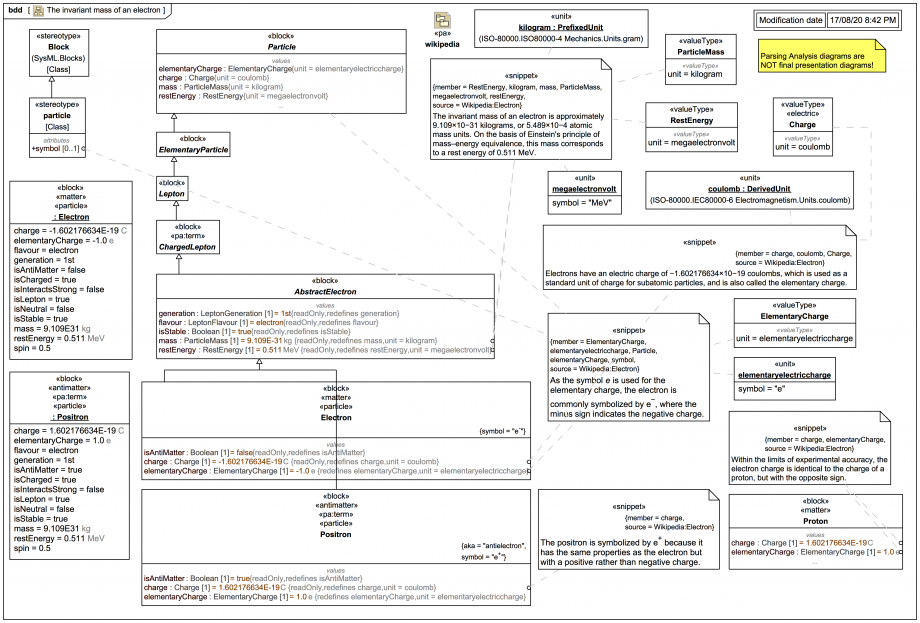Tags and keywords
We are told the 'invariant mass of an electron is approximately 9.109×10−31 kilograms'. The Unit kilogram is available in the ISO-80000 ModelLibrary. We are also told 'On the basis of Einstein's principle of mass–energy equivalence, this mass corresponds to a rest energy of 0.511 MeV', for which a custom unit megaelectronvolt with symbol 'MeV' is created.
An intermediate abstract block AbstractElectron has been now been introduced, so that Electron and Positron can share the mass and restEnergy values, keeping things DRY and respecting Single Source of Truth (SSOT). If, for example, the mass value is changed, it will change for both Electron and Positron.
Does it make sense to say that Electron and Positron also share the same generation:LeptonGeneration 'electron'? Recall we were told earlier that:
It does not say there are twelve, so for now let's assume this is fine as long as Positron is clearly marked as having isAntiMatter = true and the «antimatter» keyword applied.
We've also been told there are symbols for (at least some) particles:
A stereotype keyword «particle» with attribute symbol has been used to indicate these symbols using tagged values on Electron and Positron.
We are told 'Electrons have an electric charge of −1.602176634×10−19 coulombs', so that unit is applied to the value property charge:Charge, which is redefined in block Electron to carry a specific value. The coulomb is also already available in the ISO-80000 ModelLibrary.
We know that for a Positron it will have the opposite sign.
And we can add some data about the electric charge of a Proton thanks to:
However, concerning charge:Charge, what we have now in the model as shown is definitely not DRY, as the magnitude 1.602176634E-19 has now been repeated 3 times in the model, making it WET.
It seems that stating charges in terms of a Unit elementaryelectriccharge with symbol 'e' is more useful for particle physics, and then value properties for charge in coulombs could be declared then computed for any Particle from the elementaryCharge, as shown next .


